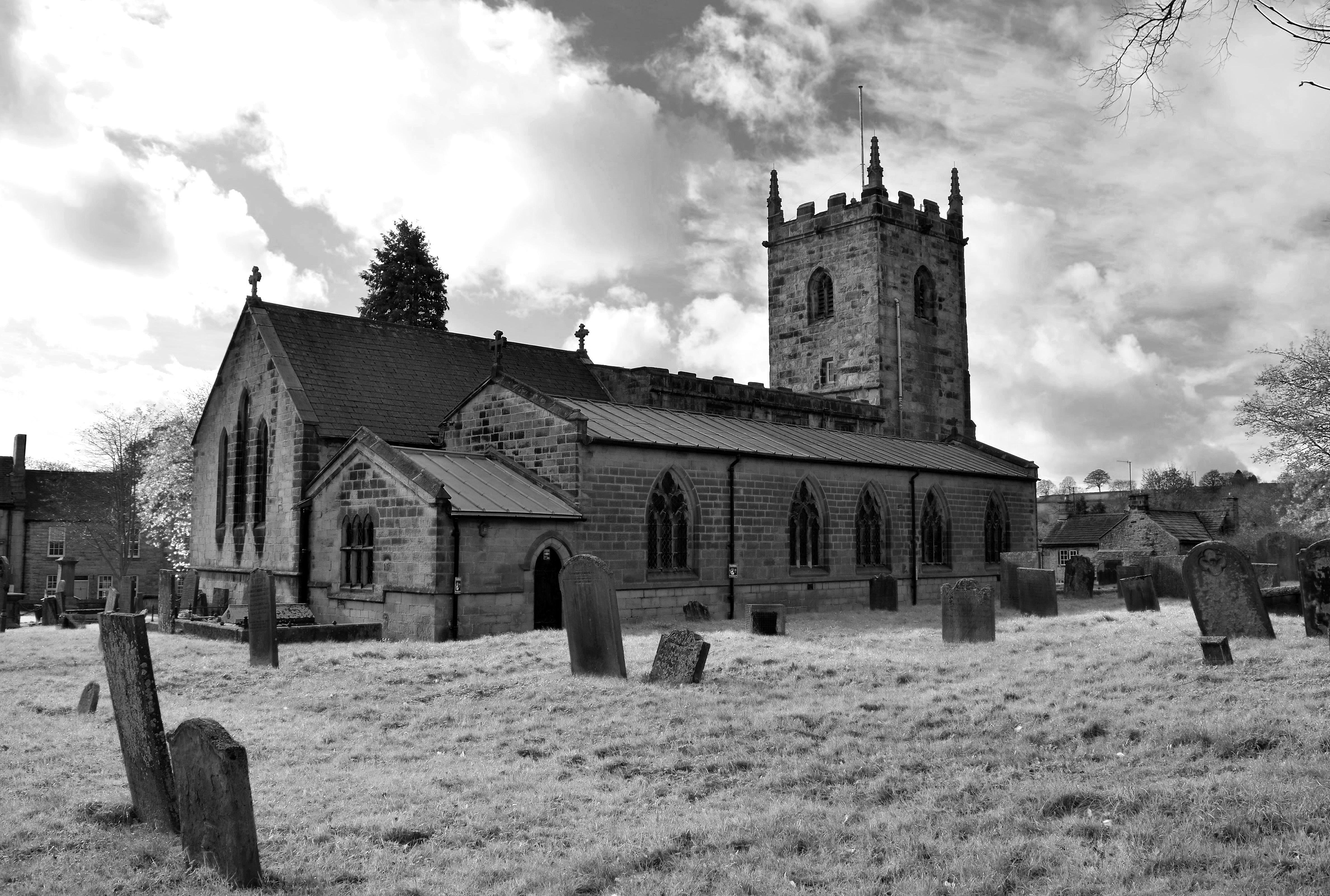Eglwys Crist
Yr Orsedd, Clwyd
Adeiladwyd yr eglwys gyntaf ar y safle hwn yn 1841, ond fe’i difrodwyd yn ddifrifol gan dân. Yn ôl yr hanes, ym mis Mai 1891, cynhaliodd y Ficer ‘briodas yn yr adfeilion’.

On a gentle hill in the village of Eyam in Derbyshire’s beautiful Peak District, Eyam is noted for the historical reality of the plague in 1665-66.
Eyam, Derbyshire
St Lawrence church extends a warm welcome to visitors. There has been a place of worship on this site from the the 13th century.
The church's stained glass windows are mainly Victorian; the most recent window is more modern and depicts the story of the plague for which the village is famous. The window includes a 'ring of roses', a reminder that the nursery rhyme had a deadly origin. The ring of roses is symbolic of a rosy skin rash which turned purple, a plague symptom. The posies were herbs and flowers carried as a protection and to ward off the smell of the disease. Sneezing or coughing was a final fatal symptom, and 'all fall down' was death.
In 1665 the Plague was raging in London. A tailor from Eyam by the name of George Viccars ordered some cloth from the capital. It arrived damp and had to be laid out to dry, releasing plague carrying fleas. Within days Viccars and some of his neighbours fell ill and died, some families began to panic and fled the area. William Mompesson, the Rector, feared that this would spread the disease over a wider area and asked villagers to quarantine themselves.
Food and medical supplies were left at various points on the village boundary. Eyam church was closed, there were no funerals and families buried their own dead near their homes. At nearby Riley, a Mrs Hancock buried her husband and 6 children in a space of 8 days.
The plague ended in October 1666 and had claimed 260 lives in a 14 month period. Some of the village cottages now carry a commemorative plaque. An authentic history of those fearful months is vividly told in an exhibition in the church and museum.
The churchyard contains a very well preserved Saxon cross, beautifully carved with intricate interlace patterns on the shaft, with scrollwork and foliage, and figures depicting Christ, the Virgin Mary, and angels are carved on panels on the shaft and crosshead.
Eyam Well Dressing takes place at the end of August, usually around the bank holiday Saturday and there is a Plague Commemoration Service annually at the end of August, usually around the bank holiday Sunday.
Yr Orsedd, Clwyd
Adeiladwyd yr eglwys gyntaf ar y safle hwn yn 1841, ond fe’i difrodwyd yn ddifrifol gan dân. Yn ôl yr hanes, ym mis Mai 1891, cynhaliodd y Ficer ‘briodas yn yr adfeilion’.
Penarlâg, Flintshire
Mae eglwys wedi’i chysegru i Sant Deiniol wedi sefyll ar y safle hwn ers y chweched ganrif. Mae’r gynulleidfa’n ymfalchïo yn y cysylltiad rhwng yr eglwys a theulu y Prif Weinidog Fictoraidd, William Ewart Gladstone.
Llantysilio, Denbighshire
Saif eglwys St Tysilio mewn Ardal Gadwraeth, yn edrych dros yr Afon Dyfrdwy, yn ymyl Dyfrbont Pontcysyllte, un o Safleoedd Treftadaeth y Byd. Wrth ymweld â’r lle, cewch eich ysgubo nôl tua phum can mlynedd.